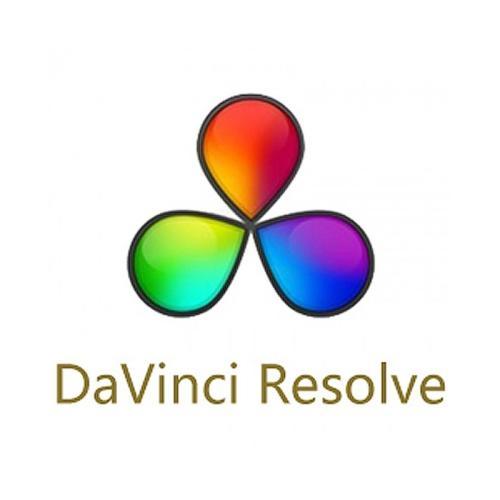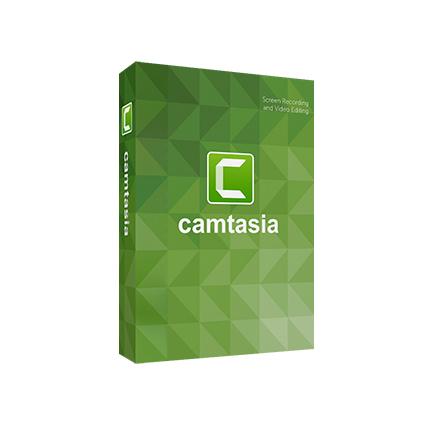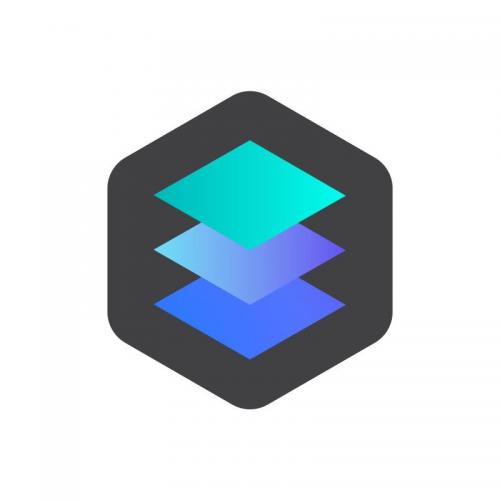AI Agent 如何实现?6张4090 魔改Llama2:一句指令拆分任务、调用函数
 发布于2023-10-15 阅读(0)
发布于2023-10-15 阅读(0)
扫一扫,手机访问
AI Agent 是目前炙手可热的一个领域,在 OpenAI 应用研究主管 LilianWeng 写的一篇长篇文章中[1],她提出了 Agent = LLM+ 记忆 + 规划技能 + 工具使用的概念

图1 Overview of a LLM-powered autonomous agent system
Agent的作用是利用LLM的强大语言理解和逻辑推理能力,调用工具来帮助人类完成任务。然而,这也带来了一些挑战,比如基础模型的能力决定了Agent调用工具的效率,但基础模型本身存在着大模型幻觉等问题
本文以「输入一段指令自动实现复杂任务拆分和函数调用」的场景为例,来构建基础 Agent 流程,并侧重讲解如何通过「基础模型选择」、「Prompt设计」等来成功构建「任务拆分」和「函数调用」模块。
重新编写的内容是:地址:
https://sota.jiqizhixin.com/project/smart_agent
GitHub Repo:
需要重写的内容是:https://github.com/zzlgreat/smart_agent
任务拆分&函数调用 Agent 流程
对于实现「输入一段指令自动实现复杂任务拆分和函数调用」,项目构建的 Agent 流程如下:
- planner:根据用户输入的指令拆分任务。确定自己拥有的工具列表 toolkit,告诉拆分任务的大模型 planner 自己具有哪些工具,需要完成什么样的任务,planner 把任务拆分为计划 1,2,3...
- distributor:负责选择适当的工具来 toolkit 执行计划。函数调用模型需要根据计划的不同分别选择对应的工具。
- worker:负责调用工具箱中的任务,并且返回任务调用的结果。
- solver:整理出来的分布计划和对应的结果组合为一个 long story,再由 solver 进行总结归纳。

图1 《ReWOO: Decoupling Reasoning from Observations for Efficient Augmented Language Models》
为了实现上述流程,在「任务拆分」和「函数调用」模块中,项目分别设计了两个微调模型,以实现将复杂任务拆分并按需调用自定义函数的功能。归纳总结的模型 solver,可以与拆分任务模型相同
微调任务拆分&函数调用模型
2.1 微调经验总结
在「任务拆分」模块中,大模型需要具备将复杂任务分解为简单任务的能力。「任务拆分」的成功与否主要取决于两个因素:
- 基础模型选择:为了拆分复杂任务,选择微调的基础模型本身需要具备良好的理解和泛化能力,即根据 prompt 指令拆分训练集中未见的任务。目前来讲,选择高参数的大模型更容易做到这一点。
- Prompt 设计:prompt 能否成功地调用模型的思维链,将任务拆分为子任务。
同时希望任务拆分模型在给定 prompt 模板下的输出格式可以尽可能相对固定,但也不会过拟合丧失模型原本的推理和泛化能力,这里采取 lora 微调 qv 层,对原模型的结构改动尽可能地少。
在「函数调用」模块中,大模型需要具备稳定调用工具的能力,以适应处理任务的要求:
- 损失函数调整:除选择的基础模型本身泛化能力、Prompt 设计外,为实现模型的输出尽可能地固定、根据输出稳定调用所需函数,采用「prompt loss-mask」的方法[2]进行 qlora 训练(详见下文阐述),并通过魔改 attention mask 的方式,在 qlora 微调中使用插入 eos token 的小技巧来稳定住模型的输出。
此外,在算力使用方面,通过 lora/qlora 微调实现了低算力条件下大型语言模型的微调和推理,并采用量化部署的方式,进一步降低推理的门槛。
2.2 基础模型选择
对于选择「任务拆分」模型,我们希望模型具备强大的泛化能力和一定的思维链能力。在这方面,我们可以参考HuggingFace上的Open LLM排行榜来选择模型,我们更关注的是衡量文本模型多任务准确性的测试MMLU和综合评分Average

需要重新书写的内容是:图2 HuggingFace 开放的LLM排行榜(0921)
本项目选择了任务拆分模型型号为:
- AIDC-ai-business/Marcoroni-70B:该模型基于 Llama2 70B 微调,负责拆分任务。根据 HuggingFace 上 Open LLM Leaderboard 显示,该模型的 MMLU 和 average 都比较高,而且该模型的训练过程中加入了大量的 Orca 风格的数据,适用于多轮对话,在 plan-distribute-work-plan-work……summary 的流程中效果表现会更好。
对于选择"函数调用"模型,meta开源的Llama2版本的CodeLlama编程模型的原始训练数据包含了大量的代码数据,因此可以尝试使用qlora进行自定义脚本微调。对于函数调用模型,选择CodeLlama模型(34b/13b/7b均可)作为基准
本项目选择了函数调用模型型号为:
- codellama 34b/7b:负责函数调用的模型,该模型采用大量代码数据训练,代码数据中必然包含大量对函数的描述类自然语言,对于给定函数的描述具有良好的 zero-shot 能力。
为了对「函数调用」模型进行微调,该项目采用了 prompt loss mask 的训练方式,以稳定处理模型的输出。下面是损失函数的调整方式:
- 损失掩码 (loss_mask):
- loss_mask 是一个与输入序列 input_ids 形状相同的张量 (tensor)。每个元素都是 0 或 1,其中 1 表示对应的位置的标签应被考虑在损失计算中,而 0 表示不应被考虑。
- 例如,如果某些标签是填充的(通常是因为批处理中的序列长度不同),不想在损失的计算中考虑这些填充的标签。在这种情况下,loss_mask 为这些位置提供了一个 0,从而遮蔽掉了这些位置的损失。
- 损失计算:
- 首先,使用了 CrossEntropyLoss 来计算未 mask 的损失。
设置 reductinotallow='none' 来确保为序列中的每个位置都返回一个损失值,而不是一个总和或平均值。 - 然后,使用 loss_mask 来 mask 损失。通过将 loss_mask 与 losses 相乘,得到了 masked_loss。这样,loss_mask 中为 0 的位置在 masked_loss 中的损失值也为 0。
- 损失聚合:
- 将所有的 masked_loss 求和,并通过 loss_mask.sum() 来归一化。这确保了你只考虑了被 mask 为 1 的标签的损失。为了防止除以零的情况,加一个很小的数 1e-9。
- 如果 loss_mask 的所有值都是 0(即 loss_mask.sum() == 0),那么直接返回一个 0 的损失值。
2.3 硬件需求:
- 6*4090 for Marcoroni-70B’s 16bit lora
- 2*4090 for codellama 34b’s qlora / 1*4090 for codellama 13/7b’s qlora
2.4 Prompt 格式设计
任务拆分方面,该项目使用了大型语言模型高效推理框架 ReWOO(Reasoning WithOut Observation)中 planner 设计的 Prompt 格式。只需要将'Wikipedia[input]'等函数替换为相应的函数和描述即可,下面是该示例 prompt:
For the following tasks, make plans that can solve the problem step-by-step. For each plan, indicate which external tool together with tool input to retrieve evidence. You can store the evidence into a variable #E that can be called by later tools. (Plan, #E1, Plan, #E2, Plan, ...) Tools can be one of the following: Wikipedia[input]: Worker that search for similar page contents from Wikipedia. Useful when you need to get holistic knowledge about people, places, companies, historical events, or other subjects.The response are long and might contain some irrelevant information. Input should be a search query. LLM[input]: A pretrained LLM like yourself. Useful when you need to act with general world knowledge and common sense. Prioritize it when you are confident in solving the problem yourself. Input can be any instruction.
对于函数调用,因为后续会进行 qlora 微调,所以直接采用 huggingface 上开源函数调用数据集 [3] 中的 prompt 样式。请参见下文。
指令数据集准备
3.1 数据来源
- 拆任务模型:Marcoroni-70B 采用的是 alpaca 的提示模板。该模型在 Llama2 70B 上进行指令微调,为和原始模型的模板进行对齐,需采用 alpaca 格式的数据集。这里使用 rewoo 的 planner 数据集格式,但在原始数据集中只有调用 wiki 和自己的选项,所以可以套用该模板,并采用 gpt4 的接口来制作该样式的数据集。
- 函数调用模型:尽管所选用的 HuggingFace 开源函数调用的数据集的数据量较少(55 行),但 qlora 十分有效,在该数据集中还附带了代码训练模板。
3.2 数据集格式
- 任务拆分模型数据格式:alpaca
### Instruction:(without the <>)### Response:如:### Instruction:For the following tasks, make plans that can solve the problem step-by-step. For each plan, indicate which external tool together with tool input to retrieve evidence. You can store the evidence into a variable #E that can be called by later tools. (Plan, #E1, Plan, #E2, Plan, ...) Tools can be one of the following:get_current_time[input]: Get the current time for now. search_bing[input]: Search the web for content on Bing, and return the top 10 results. Remember, the results may not as good as Wikipedia. If you think the result will not exist in wikipedia, use it. search_wiki[input]: Search the web for content on Wikipedia, and return the top 3 results. If you think the result can exist in wikipedia, use it. search_bilibili[input]: Search for videos on Bilibili, which is a website full of ACG. It can return top 10 search results. save_file[input]: save a file in the target dir which contains the data. query_mysql[input]: Execute the sql in the local mysql database. And return the result. What movies did the director of 'Oppenheim' direct? List the top 10 best.### Response:Step 1: Identify the director of "Oppenheimer" movie.#E1 = search_wiki("Director of Oppenheimer")Step 2: Retrieve information about the director's other works.If the retrieved name exists in Wikipedia, proceed with searching their filmography using search_wiki. Otherwise, try searching through Bing or another source like IMDb.For example, if Christopher Nolan is found as the director of "Oppenheimer":#E2 = search_bing("Filmography of Christopher Nolan")Step 3: Extract the list of films directed by this person from the retrieved information.From the returned results, extract the titles of the top 10 best movies according to critics/audience ratings or personal preference.
- 函数调用模型数据格式:
采用 trelis 数据集的格式。数据集规模较小,仅有55行。其结构实际上与alpaca格式相似。分为systemPrompt,userPrompt和assistantResponse,分别对应alpaca的Instruction,prompt和Response。以下是示例:

图3 HuggingFace 函数调用开源数据集示例
微调过程说明
4.1 微调环境
在Ubuntu 22.04系统上,使用了CUDA 11.8和Pytorch 2.0.1,并采用了LLaMA-Efficient-Tuning框架。此外,还使用了Deepspeed 0.10.4
4.2 微调步骤
需要进行针对 Marcoroni-70B 的 lora 微调
- LLaMA-Efficient-Tuning 框架支持 deepspeed 集成,在训练开始前输入 accelerate config 进行设置,根据提示选择 deepspeed zero stage 3,因为是 6 卡总计 144G 的 VRAM 做 lora 微调,offload optimizer states 可以选择 none, 不卸载优化器状态到内存。
- offload parameters 需要设置为 cpu,将参数量卸载到内存中,这样内存峰值占用最高可以到 240G 左右。gradient accumulation 需要和训练脚本保持一致,这里选择的是 4。gradient clipping 用来对误差梯度向量进行归一化,设置为 1 可以防止梯度爆炸。
- zero.init 可以进行 partitioned 并转换为半精度,加速模型初始化并使高参数的模型能够在 CPU 内存中全部进行分配。这里也可以选 yes。
全部选择完成后,新建一个训练的 bash 脚本,内容如下:
accelerate launch src/train_bash.py \--stage sft \--model_name_or_path your_model_path \--do_train \--dataset rewoo \--template alpaca \--finetuning_type lora \--lora_target q_proj,v_proj \--output_dir your_output_path \--overwrite_cache \--per_device_train_batch_size 1 \--gradient_accumulation_steps 4 \--lr_scheduler_type cosine \--logging_steps 10 \--save_steps 1000 \--learning_rate 5e-6 \--num_train_epochs 4.0 \--plot_loss \--flash_attn \--bf16
这样的设置需要的内存峰值最高可以到 240G,但还是保证了 6 卡 4090 可以进行训练。开始的时候可能会比较久,这是因为 deepspeed 需要对模型进行 init。之后训练就开始了。

需要重新写的内容是:图4 6 卡 4090 训练带宽速度
共计用时 8:56 小时。本次训练中因为主板上的 NVME 插槽会和 OCULINK 共享一路 PCIE4.0 x16 带宽。所以 6 张中的其中两张跑在了 pcie4.0 X4 上,从上图就可以看出 RX 和 TX 都只是 PCIE4.0 X4 的带宽速度。这也成为了本次训练中最大的通讯瓶颈。如果全部的卡都跑在 pcie 4.0 x16 上,速度应该是比现在快不少的。

需要进行改写的内容是:图5展示了LLaMA-Efficient-Tuning生成的损失曲线
以上是 LLaMA-Efficient-Tuning 自动生成的 loss 曲线,可以看到 4 个 epoch 后收敛效果还是不错的。
2)针对 codellama 的 qlora 微调
根据前文所述的 prompt loss mask 方法,我们对 trainer 类进行了重构(请参考项目代码仓库中的 func_caller_train.py)。由于数据集本身较小(共55行),所以仅需两分钟即可完成4个epoch的训练,模型迅速收敛
4.3微调完成后的测试效果
在项目代码仓库中,提供了一个简短可用的 toolkit 示例。里面的函数包括:
- 必应搜索
- 维基搜索
- bilibili 搜索
- 获取当前时间
- 保存文件
- ...
现在有一个70B和一个34B的模型,在实际使用中,用6张4090同时以bf16精度运行这两个模型是不现实的。但是可以通过量化的方法压缩模型大小,同时提升模型推理速度。这里采用高性能LLM推理库exllamav2运用flash_attention特性来对模型进行量化并推理。在项目页面中作者介绍了一种独特的量化方式,本文不做赘述。按照其中的转换机制可以将70B的模型按照2.5-bit量化为22G的大小,这样一张显卡就可以轻松加载
需要重新编写的内容是:1)测试方法
给定一段不在训练集中的复杂任务描述,同时在 toolkit 中添加训练集中不包含的函数和对应描述。如果 planner 可以完成对任务进行拆分,distributor 可以调用函数,solver 可以根据整个流程对结果进行总结。
需要重新写的内容是:2)测试结果
任务拆分:首先使用 text-generation-webui 快速测试任务拆分模型的效果,如下图所示:

图6 任务拆分测试结果
这里可以写一个简单的 restful_api 接口,方便在 agent 测试环境下的调用(见项目代码 fllama_api.py)。
函数调用:在项目中已经写好了一个简单的 planner-distributor-worker-solver 的逻辑。接下来就让测试一下这个任务。输入一段指令:what movies did the director of 'Killers of the Flower Moon' direct?List one of them and search it in bilibili.
「搜索 bilibili 」这个函数是不包含在项目的函数调用训练集中的。同时这部电影也是一部还没有上映的新电影,不确定模型本身的训练数据有没有包含。可以看到模型很好地将输入指令进行拆分:
- 从维基百科上搜索该电影的导演
- 根据 1 的结果,从 bing 上搜索电影 Goodfellas 的结果
- 在 bilibili 上搜索电影 Goodfellas
同时进行函数调用得到了以下结果:点击结果是 Goodfellas,和该部电影的导演匹配得上。
总结
本项目以「输入一段指令自动实现复杂任务拆分和函数调用」场景为例,设计了一套基本 agent 流程:toolkit-plan-distribute-worker-solver 来实现一个可以执行无法一步完成的初级复杂任务的 agent。通过基础模型的选型和 lora 微调使得低算力条件下一样可以完成大模型的微调和推理。并采用量化部署的方式,进一步降低推理的门槛。最后通过该 pipeline 实现了一个搜索电影导演其他作品的示例,实现了基础的复杂任务完成。
局限性:本文只是基于搜索和基本操作的 toolkit 设计了函数调用和任务拆分。使用的工具集非常简单,并没有太多设计。针对容错机制也没有太多考虑。通过本项目,大家也可以继续向前一步探索 RPA 领域上的应用,进一步完善 agent 流程,实现更高程度的智能自动化提升流程的可管理性。
产品推荐
-

售后无忧
立即购买>- DAEMON Tools Lite 10【序列号终身授权 + 中文版 + Win】
-
¥150.00
office旗舰店
-

售后无忧
立即购买>- DAEMON Tools Ultra 5【序列号终身授权 + 中文版 + Win】
-
¥198.00
office旗舰店
-

售后无忧
立即购买>- DAEMON Tools Pro 8【序列号终身授权 + 中文版 + Win】
-
¥189.00
office旗舰店
-

售后无忧
立即购买>- CorelDRAW X8 简体中文【标准版 + Win】
-
¥1788.00
office旗舰店
-
 正版软件
正版软件
- 瑞波币最初价格是多少
- 瑞波币(XRP)在2013年首次发行时的价格为0.005美元。它的价格经历了波动,在2017年达到3.84美元的历史高点,但在2020年又跌至0.12美元。自2021年以来,瑞波币的价格在0.30美元至0.50美元之间波动。受监管不确定性、市场波动、采用程度、用例和竞争等因素影响。
- 7分钟前 0
-
 正版软件
正版软件
- SOL币和BCH币那个更有潜力?SOL币和BCH币有什么区别?
- 当前被币圈看好的潜力币除了SOL币还有BCH币,SOL是Solana区块链平台的原生代币,BCH是BitcoinCash项目的代币,它是比特币的一个分叉货币。因为具有不同的技术特点、应用场景和发展方向,投资者在二者之前做出选择也比较困难,就想通过分析SOL币和BCH那个更有潜力?再进行投资。但币种的比较是要根据市场、发展前景、项目实力等方面综合分析的。接下来小编为大家详细说说。SOL币和BCH那个更有潜力?相较而言SOL币更有潜力,确定SOL币和BCH那个更有潜力是一个复杂的问题,因为这取决于许多因素,包
- 12分钟前 对比 SOL币 BCH币 0
-
 正版软件
正版软件
- 比特币杠杆最多多少倍
- 比特币杠杆最高可达100倍。杠杆倍率有多种类型,如10倍、20倍和100倍。杠杆交易放大利润但也有风险,例如使用10倍杠杆时,如果比特币下跌10%,将亏损所有初始资本。杠杆交易适合经验丰富的交易者,新手和风险厌恶者应避免使用。选择合适的杠杆倍率至关重要,应根据风险承受能力、市场波动和交易策略来确定。
- 27分钟前 0
-
 正版软件
正版软件
- 一文分析SATS币现在还能买吗?
- 提起BRC20就不得不提起其龙头币SATS,SATS是一个独特的加密货币项目,它将比特币最小单位聪的概念转化为一个具有交易价值和收藏意义的独立代币,以此向比特币创始人中本聪致敬。SATS发展历程中,其市值甚至一度超越ORDI的市值,让币圈投资者倍感震惊,即便发展趋势不错,但对于SATS币现在还能买吗?投资者依旧举棋不定,不确定是否能够投资。就当前数据来看,是有购买价值的,下面小编为大家详细说说。SATS币现在还能买吗?SATS币目前能够购买,根据当前数据显示,当前SATS币的价格为0.00000065美元
- 42分钟前 0
-
 正版软件
正版软件
- Coinbase 陷入诉讼旋涡:案件背景、判决详情及未来走向
- 在3月27日,美国纽约南区地方法院法官KatherinePolkFailla驳回了大部分Coinbase的动议,认为Coinbase作为未注册的交易所、经纪人和清算机构与联邦证券法下的机构,并通过其质押计划从事未经注册的证券发行和销售。不过法院驳回了SEC对Coinbase通过向客户提供其钱包应用程序而充当未注册经纪人的指控。判决原文:https://plum-harrietta-82.tiiny.site/参考资料:https://www.coindesk.com/policy/2024/03/27/c
- 57分钟前 诉讼 Coinbase 0
最新发布
-
 1
1
- 阿里追捧的中台,“热度”退了?
- 1857天前
-
 2
2
- Overture设置踏板标记的方法
- 1694天前
-
 3
3
- 思杰马克丁取得CleanMyMac中国区独家发行授权
- 1684天前
-
 4
4
- IBM:20万台Mac让公司职工在工作中更快乐 更多产
- 1883天前
-
 5
5
- 报道称微软一直在悄然游说反对“维修权”立法!
- 1848天前
-
 6
6
- 美国怀疑华为窃取商业机密 华为:身正不怕影子斜
- 1844天前
-
 7
7
- 三星被曝正与联发科接洽 A系列手机有望搭载其5G芯片
- 1859天前
-
 8
8
- 环球墨非完成千万级融资 联合企业集团投资
- 1881天前
-
 9
9
相关推荐
热门关注
-

- Xshell 6 简体中文
- ¥899.00-¥1149.00
-

- DaVinci Resolve Studio 16 简体中文
- ¥2550.00-¥2550.00
-

- Camtasia 2019 简体中文
- ¥689.00-¥689.00
-

- Luminar 3 简体中文
- ¥288.00-¥288.00
-

- Apowersoft 录屏王 简体中文
- ¥129.00-¥339.00